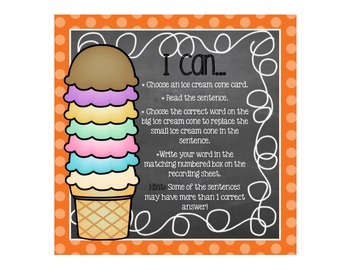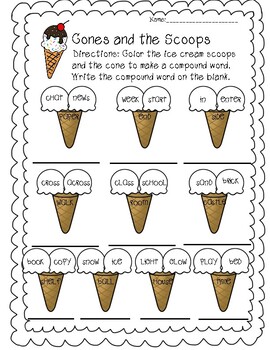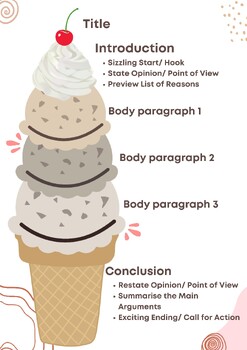Introduction
The introduction to this blog will provide an overview of the grammar of the term “ice cream” and the controversy surrounding it. Many people are unsure whether “ice cream” should be considered as one word or two. This article aims to provide clarity on the correct usage and spelling of the term. Additionally, the history of the term will be briefly discussed to understand its origins. By exploring different variations, grammar rules, language variations, and common mistakes, readers will gain a comprehensive understanding of ice cream grammar.
Overview Of Ice Cream Grammar And The Controversy Surrounding It

Ice cream grammar is a topic that has sparked debate among language enthusiasts. The controversy arises from whether “ice cream” should be considered as one word or two. While some argue that it should be written as two separate words, others argue for it to be written as one word. This discrepancy is often based on individual style choices and regional language variations. The varying opinions on this grammar matter highlight the intricacies of language and the flexibility of grammar rules. To provide clarity on this issue, let’s delve into the definition, usage, and rules surrounding the term “ice cream.”
History Of The Term Ice Cream
The term “ice cream” has a rich and flavorful history that dates back centuries. The concept of enjoying frozen desserts can be traced back as far as ancient China, where a mixture of rice and milk was frozen in the snow. In the 13th century, Marco Polo discovered a similar treat during his travels in China and brought the idea back to Italy. Eventually, this frozen delicacy made its way to Europe and became popular among the elite. Over time, various recipes and methods for creating ice cream emerged, leading to the modern-day treat enjoyed by people all over the world.
Ref: [4]
Definition And Usage
Ice cream, often enjoyed as a frozen dessert, is a creamy and sweet treat loved by people of all ages. It is commonly made from a mixture of milk, sugar, and flavorings, such as fruits or chocolate. Ice cream is typically served in bowls, cones, or as part of various desserts like sundaes or milkshakes. It is a popular choice for cooling down during hot summer days or as a special indulgence throughout the year. The term “ice cream” is used to refer to this frozen dessert, and it is recognized as a single word in the English language.
Is Ice Cream One Word Or Two?

When it comes to whether ice cream is considered one word or two, the consensus is that it is indeed one word. While some may argue that the term “ice cream” consists of two separate words, the majority of dictionaries and language experts recognize it as a compound noun. This means that the words “ice” and “cream” are joined together to create a single, unified term. So, if you’re ever unsure, remember that ice cream is commonly accepted as a single word.
Common Variations And Alternative Spellings
When it comes to variations and alternative spellings, the term “ice cream” remains the standard and widely accepted form. However, there are a few variations that you might come across, particularly in informal or regional contexts. Some of these variations include:
- Iced Cream: While this spelling might seem logical, it is not the standard form of the term. “Ice cream” is the preferred and more commonly used spelling.
- Icecream: This is a common misspelling of “ice cream” that combines the two words into one. However, it is not the correct form and may be considered incorrect in formal writing.
- Gelato: Gelato is an Italian variation of ice cream that differs in texture and ingredients. While it is often grouped with ice cream, it is technically a distinct type of frozen dessert.
It’s important to note that, while these variations exist, “ice cream” is the correct and generally accepted spelling in standard English usage.
Grammar Rules
When it comes to using ice cream in sentences, there are a few grammar rules to keep in mind. First, as established earlier, ice cream is generally written as two separate words. This is the standard form accepted by reputable dictionaries. Second, when using ice cream as a compound noun modifier, a hyphen can be used to connect the words, such as in “ice-cream cone” or “ice-cream parlor.” Additionally, when using ice cream as an adjective to describe a noun, it should be written with a hyphen, like “ice-cream flavors” or “ice-cream truck.” Following these grammar rules will ensure accurate and clear language usage.
Grammar Guidelines For Using Ice Cream In Sentences
When using the term “ice cream” in sentences, it is important to follow certain grammar guidelines. First and foremost, remember that “ice cream” is typically written as two separate words. For compound nouns, such as “ice-cream cone” or “ice-cream parlor,” a hyphen should be used to connect the words. When using “ice cream” as an adjective to describe a noun, it should be written with a hyphen, like “ice-cream flavors” or “ice-cream truck.” By adhering to these guidelines, writers can ensure accurate and clear language usage when referring to everyone’s favorite frozen treat.
Capitalization Rules For Ice Cream-related Words

When it comes to capitalization, there are specific rules to follow for ice cream-related words. In general, the first letter of a sentence and proper nouns should always be capitalized. However, when it comes to specific terms such as “ice cream flavors” or “ice cream parlor,” it is common practice to capitalize the first letter of each word. This helps to distinguish the term as a proper noun and gives it more emphasis. It is important to adhere to these capitalization rules to ensure clarity and consistency in your writing.
Language Variations
Regional differences in ice cream grammar can be observed across different English-speaking countries. For example, in the United States, the term “ice cream truck” is commonly used, while in the United Kingdom, it is referred to as an “ice cream van.” Additionally, terminology for specific types of ice cream, such as gelato or sorbet, may vary by region. International variations in ice cream terminology also exist, with different countries using their own language-specific words for ice cream. It is important to be aware of these language variations to effectively communicate and understand ice cream-related discussions across different regions.
Regional Differences In Ice Cream Grammar
Regional differences in ice cream grammar vary across English-speaking countries. For instance, in the United States, it is common to refer to the vehicle that sells ice cream as an “ice cream truck.” On the other hand, in the United Kingdom, it is referred to as an “ice cream van.” These variations extend to terminology for specific types of ice cream as well, such as gelato or sorbet. It is essential to be aware of these regional language differences to effectively communicate and understand ice cream-related discussions in different parts of the world.
International Variations In Ice Cream Terminology
When it comes to ice cream terminology, different countries around the world have their own unique expressions. For example, in Italy, gelato is the popular term used for ice cream, known for its creamy and dense texture. In France, you’ll come across the term glace, which refers to traditional ice cream. In Japan, there is a delightful frozen treat called mochi ice cream, featuring small balls of ice cream wrapped in sweet rice dough. These variations in terminology highlight the diverse cultures and culinary traditions associated with ice cream across the globe.
Common Mistakes And Confusions

One common mistake that people make when using ice cream grammar is capitalizing the term incorrectly. While “ice cream” is not typically capitalized, certain variations or specific product names may be capitalized, such as “Mint Chocolate Chip Ice Cream” or “Ben & Jerry’s Ice Cream.” Another confusion arises when using the term “gelato” interchangeably with “ice cream.” While they both refer to frozen desserts, gelato has a denser texture and typically contains less fat than traditional ice cream. It’s important to use these terms accurately to avoid confusion and ensure clear communication.
Frequently Made Mistakes In Using Ice Cream Grammar
One common mistake that people make when using ice cream grammar is capitalizing the term incorrectly. While “ice cream” is not typically capitalized, certain variations or specific product names may be capitalized, such as “Mint Chocolate Chip Ice Cream” or “Ben & Jerry’s Ice Cream.” Another confusion arises when using the term “gelato” interchangeably with “ice cream.” While they both refer to frozen desserts, gelato has a denser texture and typically contains less fat than traditional ice cream. It’s important to use these terms accurately to avoid confusion and ensure clear communication. [25]
Confusing Terms And Their Correct Usage
When it comes to discussing frozen desserts, there are a few terms that often get confused. One common confusion is the interchangeable use of “gelato” and “ice cream.” While they both refer to frozen treats, gelato has a denser texture and typically contains less fat than traditional ice cream. It’s important to use these terms accurately to avoid confusing your audience. Additionally, be aware of specific product names and variations that may be capitalized, such as “Mint Chocolate Chip Ice Cream” or “Ben & Jerry’s Ice Cream.” Using these terms correctly will ensure clear communication and avoid misunderstandings. [28]
Conclusion

In conclusion, navigating ice cream grammar can be a puzzling task due to the differing opinions surrounding the term. While dictionaries provide some flexibility in defining what constitutes a word, it is generally accepted that “ice cream” is considered a two-word phrase in standard usage. It is important to adhere to grammar guidelines and capitalize specific product names accurately. By understanding the correct usage of ice cream terminology, we can ensure clear communication and avoid confusion. So, whether you enjoy gelato, ice cream, or any other frozen treat, remember to use the correct terms to convey your message accurately.
Summary Of Ice Cream Grammar Rules And Recommendations
In summary, when it comes to the grammar of ice cream, it is generally accepted that “ice cream” is considered a two-word phrase. However, there are variations and alternative spellings in different regions and languages. To ensure accurate usage, it is important to follow proper capitalization rules, especially when referring to specific ice cream products. Additionally, avoiding common mistakes and confusion, such as using “ice cream” as an adjective, can help convey the intended meaning correctly. By adhering to these guidelines, one can navigate ice cream grammar with clarity and precision.
Final Thoughts On The Importance Of Accurate Language Usage
Accurate language usage is crucial for effective communication. Whether it’s about ice cream or any other topic, using language correctly ensures clarity and avoids confusion. In the case of ice cream grammar, understanding the rules and following them helps convey the intended meaning accurately. It also enhances professionalism and credibility. Language is a powerful tool, and using it accurately demonstrates respect for the listener or reader and allows for seamless communication. So, whether it’s writing an article or having a conversation, paying attention to language usage is vital for effective communication.
FAQ: Is “ice cream” one word?
Q: Is “ice cream” written as one word?
A: No, “ice cream” is not written as one word. It is typically written as two separate words.
Q: Why is “ice cream” not written as one word?
A: The term “ice cream” is a compound noun, which means it is made up of two separate words that function together as a single concept. It is a common practice in English to write compound nouns as separate words, rather than combining them into one word.
Q: Are there any exceptions to the rule of writing “ice cream” as two separate words?
A: There are no widely accepted exceptions to this rule. Although there may be cases of stylistic variations or errors, the standard and correct way to write “ice cream” is as two separate words.
Q: Are there any other examples of compound nouns that are written as separate words in the English language?
A: Yes, there are numerous examples of compound nouns in English that are written as separate words, such as “coffee mug,” “cell phone,” “chocolate bar,” “bus stop,” and many more. The specific convention for writing compound nouns can sometimes vary depending on the specific word combination.
Q: Can “ice cream” ever be written as one word in certain situations?
A: While it is generally not the standard practice to write “ice cream” as one word, it is worth mentioning that language usage can evolve and change over time. There is a possibility that in the future, the trend of English language usage may adapt, and “ice cream” could be written as one word. However, as of now, it is considered grammatically correct to write “ice cream” as two separate words.
In summary, “ice cream” is not written as one word, but as two separate words. Compound nouns like “ice cream” are typically written with space between the individual words.

Soo Good Snack Bar is an upscale snack shop located at 1309 Hermosa Ave. in Hermosa Beach, CA. This family-owned business is the newest addition to the community of Hermosa, and our goal is to create a fun and inviting place where families can enjoy delicious snack foods that fit the beach lifestyle. Check us out today and help yourself to happiness.
